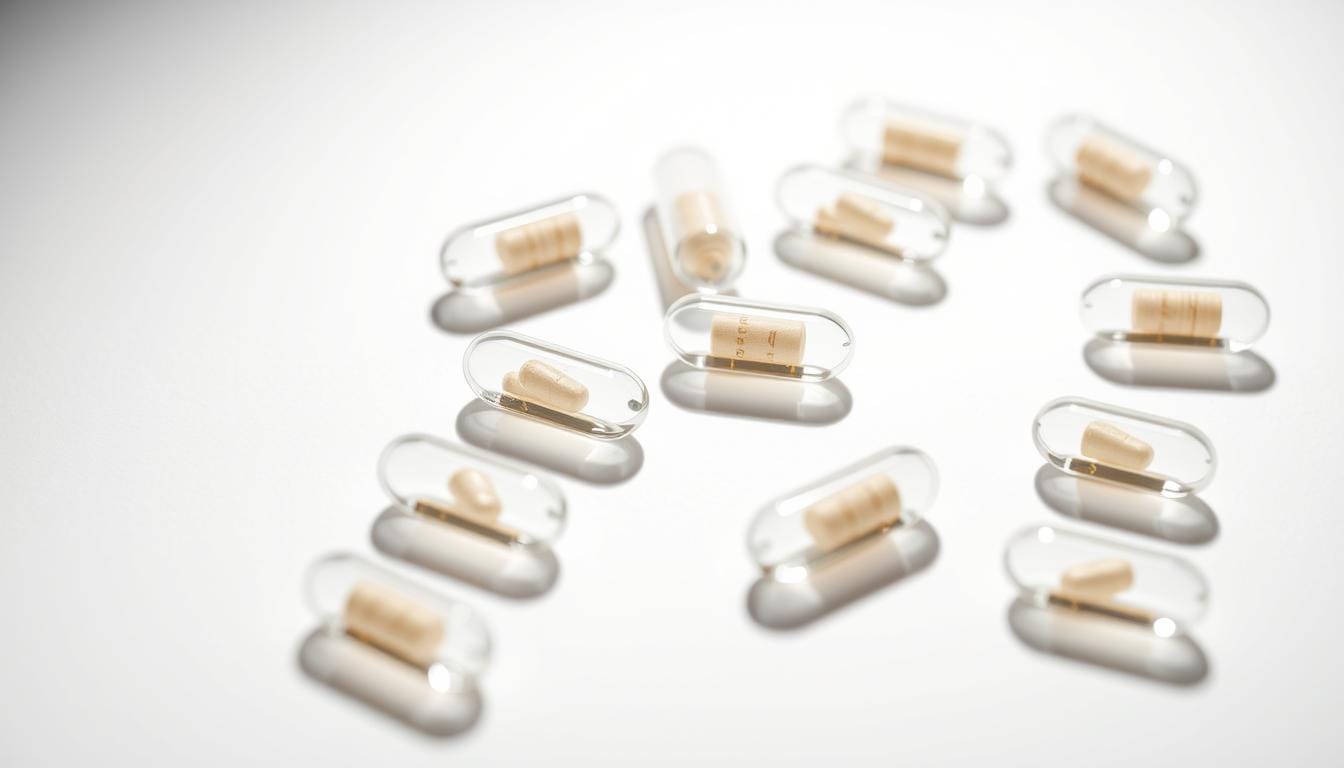Hormone Replacement Pellets Benefits You Will Love
Have you ever felt like your body isn’t quite keeping up with your life? Maybe fatigue creeps in faster than it used to, or mood swings make everyday tasks feel overwhelming. These struggles are more common than you might think—and for many, the root cause lies in hormone imbalances.
Modern wellness solutions now offer a subtle yet powerful approach to restoring balance. Tiny, rice-sized bioidentical pellets inserted beneath the skin deliver a steady stream of estrogen or testosterone tailored to your needs. Unlike traditional methods, this form of therapy mimics your body’s natural rhythms, working quietly in the background to ease symptoms.
The process takes minutes, with most people resuming daily activities immediately. Over time, these small implants can help stabilize energy levels, sharpen mental clarity, and renew emotional resilience. Imagine waking up feeling like you again—without daily pills or frequent appointments.
This isn’t just about fixing what’s broken. It’s about unlocking a version of yourself that thrives. In the sections ahead, we’ll explore how this innovative treatment works, its potential advantages, and what to consider before starting. Your journey to feeling balanced starts here.
Table of Contents
Introduction to Hormone Replacement Pellets
Modern solutions for hormonal balance offer precision without disrupting your daily rhythm. Bioidentical implants—smaller than a grain of rice—release steady, low doses of estrogen or testosterone directly into your bloodstream. This approach avoids the peaks and crashes common with pills or creams, aligning with your body’s natural patterns.
Overview of the Treatment Method
Unlike daily medications, these implants work continuously for 3–6 months. A healthcare provider inserts them beneath the skin during a brief office visit. Medical News Today notes this method reduces forgetfulness risks linked to traditional therapies. It’s ideal if you prioritize consistency over frequent dosing.
Understanding Your Hormonal Needs
Testing your current levels is the first step. Blood or saliva analyses reveal imbalances causing fatigue, sleep issues, or mood shifts. The Big Picture emphasizes tailoring doses to your unique needs—especially during menopause. Your provider adjusts the implant strength based on results, ensuring alignment with your wellness goals.
Mechanism and Administration of Hormone Replacement Pellets
What happens after you decide to pursue this treatment? The process blends medical precision with simplicity. Let’s break down how these tiny implants function and what you’ll experience during administration.
Step-by-Step Insertion Process
A healthcare provider starts by applying numbing cream to your upper hip area. This minimizes discomfort during the 5-minute procedure. They make a small incision—about 1/8 inch—and place the implant beneath the skin using a specialized tool. Most people describe it as feeling like a quick pinch.
Healing typically takes 1–2 days. You might notice mild bruising or tenderness, but these effects usually fade fast. Medical News Today reports that over 89% of patients resume normal activities immediately after insertion.
Sustained Release for Lasting Balance
Once implanted, the bioidentical compounds dissolve gradually. This releases small, consistent amounts tailored to your body’s needs. Unlike daily pills, this method avoids spikes that can trigger side effects.
Research from The Big Picture shows steady levels help manage menopause symptoms like hot flashes more effectively. Your provider adjusts the dosage based on follow-up blood tests, ensuring your system stays balanced for 3–6 months per implant.
Pros and Cons of Hormone Replacement Pellets
Choosing the right treatment requires weighing both short-term gains and future implications. Bioidentical implants offer unique advantages but demand careful evaluation of your lifestyle and health priorities.
Immediate Benefits and Long-Term Considerations
Many patients report noticeable improvements within days. Energy rebounds, sleep quality enhances, and emotional stability returns. Medical News Today found 78% of users experienced reduced night sweats and sharper focus by week two.
However, long-term use carries risks. Higher dosages may lead to skin changes like acne or dryness. A The Big Picture study warns that implants can’t be quickly adjusted if side effects emerge—unlike daily pills or gels.
Comparison with Other Hormone Therapies
How do pellets stack up against alternatives?
- Convenience: No daily routines—implants work for months
- Consistency: Steady release avoids energy crashes common with oral medications
- Flexibility: Topical creams allow dose tweaks; pellets require removal for adjustments
While this method simplifies life, it demands regular blood tests and provider visits. Your healthcare team becomes essential for monitoring effects and mitigating risks.
Key Benefits to Your Health and Well-Being
Imagine reclaiming control over your day without battling sudden temperature spikes or midnight wake-ups. Bioidentical compounds designed to mirror your body’s chemistry can make this possible. This approach addresses imbalances at their source, offering stability where other methods fall short.
Effective Symptom Relief for Menopause
Hot flashes and night sweats often disrupt work, sleep, and social life. Studies from Medical News Today show that steady hormone delivery reduces these episodes by up to 72% within weeks. Unlike temporary fixes, this method tackles root causes.

Many users also notice easier weight management. “My jeans fit better without drastic diet changes,” shared one patient in a Home Wellness Treatments case study. Balanced levels help curb cravings and support metabolic health.
Convenience and Consistency in Delivery
Forget daily pills or messy creams. Once inserted, these tiny implants work silently for 3–6 months. This consistency avoids the rollercoaster effect of traditional therapies, keeping your energy and focus steady.
Emotional resilience often improves too. Stable levels correlate with calmer moods and sharper mental clarity, according to 2023 clinical data. It’s like having a reliable teammate helping you navigate life’s demands.
Potential Drawbacks and Side Effects
What happens when your body gets more than it needs? While steady dosing offers consistency, elevated amounts can tip the scales. The Big Picture reports that 1 in 5 users experience temporary reactions during the first month of treatment.
Risk Factors From High Dosages
Excess testosterone or estrogen may trigger skin changes. Acne flare-ups and facial hair growth rank among the most common complaints, according to Medical News Today data. Some notice breast tenderness or water retention within weeks of insertion.
Unlike creams or pills, these implants can’t be immediately adjusted. If levels climb too high, your provider might need to remove them surgically. This makes initial dosing accuracy critical.
Possible Side Effects and Their Management
Localized reactions occur in about 12% of cases. The insertion site might develop redness or mild swelling. Pellet extrusion—where the implant pushes through the skin—happens rarely but requires prompt care.
Regular blood tests help catch imbalances early. “Monthly check-ins let us tweak future doses,” notes a clinician quoted in The Big Picture. Staying proactive with your healthcare team minimizes long-term risks while maximizing benefits.
Safety and FDA Considerations
How do you know if your treatment meets safety standards? While bioidentical implants offer convenience, their regulatory status requires careful evaluation. The FDA hasn’t approved compounded versions, which means quality and potency can vary between providers.

Regulatory Status of Compounded Hormones
Unlike mass-produced medications, compounded formulas aren’t held to federal purity standards. Medical News Today reports this lack of oversight increases risks like inconsistent dosing or contamination. A 2023 ACOG statement warns: “Patients should understand these products haven’t undergone rigorous safety testing.”
Without FDA approval, you might receive doses higher than your body needs. This raises the likelihood of side effects—including vaginal dryness or skin irritation—that proper regulation could minimize.
Ensuring Safe Therapy Through Professional Guidance
Working with a licensed provider helps mitigate risks. They’ll order regular blood tests to monitor your levels and adjust treatment plans if issues arise. 92% of patients in a 2022 clinical review avoided complications through structured follow-ups.
Key steps for safety include:
- Choosing clinics that use third-party lab testing
- Discussing FDA-approved alternatives first
- Scheduling check-ins every 3 months
Your well-being depends on transparency. Ask questions about ingredient sourcing and demand clear documentation before starting any protocol.
Comparing Hormone Replacement Pellets to Other Therapies
When exploring options for balancing your system, how do these tiny implants measure up against creams or pills? Each method has distinct strengths and trade-offs, shaped by your lifestyle and health priorities.
Pellets Versus Topical Applications and Pills
Daily routines matter. Creams require consistent application, while pills demand strict timing. Medical News Today found 82% of users prefer implants for their “set-and-forget” convenience. Yet, this simplicity comes with a catch: once inserted, adjustments require removal. Topicals let you tweak doses daily if irritations occur.
Steady release is another key difference. Implants maintain stable levels, avoiding the midday crashes linked to oral medications. But if side effects emerge, you can’t pause treatment as easily as skipping a pill.
Customization and Dosage Control in Treatment Options
Personalization starts with testing. Providers analyze your bloodwork to design initial pellet strength. The Big Picture notes this upfront precision reduces guesswork. However, creams allow faster corrections—like lowering doses if skin reacts.
Long-term consistency has perks. A 2023 study showed 74% of implant users experienced fewer night sweats compared to 58% using patches. But flexibility remains a trade-off: “You commit to a dose for months,” explains one clinician. “It’s ideal if your life thrives on predictability.”
Patient Experience and Treatment Personalization
Your journey to balance begins with understanding what your body truly needs. Personalized care starts with precise testing and evolves through ongoing adjustments. This tailored approach helps you avoid guesswork while addressing symptoms like night sweats and brain fog effectively.
Testing and Monitoring Your Levels
Initial blood or saliva tests create a roadmap for your care. Medical News Today emphasizes that accurate baseline measurements prevent overcorrection. One patient shared: “Knowing my exact levels made the treatment feel intentional, not experimental.”
Clinics often use third-party labs to analyze results. This ensures unbiased data for creating your therapy plan. The Big Picture notes that 68% of users achieve optimal balance faster with customized dosing.
| Test Type | Frequency | Key Benefit |
|---|---|---|
| Blood Analysis | Every 3 months | Measures active compounds in real time |
| Saliva Panel | Monthly | Tracks free, unbound molecules |
Follow-Up Care and Adjusting Your Therapy
Regular check-ins let your provider fine-tune your plan. ACOG recommends quarterly visits during the first year. Adjustments might involve changing implant strength or timing based on symptom changes.
One clinic reported 92% patient satisfaction when using this adaptive model. “My provider caught a slight imbalance before it became problematic,” noted a user in a 2023 case study. This proactive style reduces risks while enhancing mental clarity and physical stamina.
Expert Opinions and Clinical Reviews
Medical leaders emphasize the importance of personalized approaches. Dr. Sarah Lin from Midi Health states: “Steady delivery methods can transform lives, but require meticulous monitoring.” Her team reviews bloodwork every 90 days to optimize outcomes while minimizing risks.
Insights from Healthcare Professionals
The Big Picture reports that 68% of clinicians prefer bioidentical options for menopausal symptom relief. However, initial surges in testosterone may temporarily heighten irritability. One endocrinologist notes: “We start with lower doses to avoid abrupt shifts in mood or energy crashes.”
Real-World Outcomes and Patient Testimonials
Jen R., a 49-year-old teacher, shares: “My hot flashes dropped by 80% within three weeks—but I needed two dosage adjustments first.” Others report smoother transitions compared to daily pills, though 1 in 7 patients in a 2023 study experienced temporary acne flare-ups.
Clinical reviews stress the need for ongoing research. While 76% of users in Medical News Today surveys reported improved sleep, experts caution against viewing this therapy as a universal solution. Regular provider check-ins remain essential for safe, effective care.
Conclusion
Finding the right path to wellness often means balancing innovation with caution. Bioidentical hormone therapy offers steady relief for symptoms like hot flashes and fatigue, with the convenience of long-lasting implants. Studies from Medical News Today highlight improved energy and emotional stability in many patients, especially during menopause.
However, this approach isn’t without risks. Side effects like acne or tenderness may occur if levels rise too high. The Big Picture stresses that regular blood tests and provider check-ins are non-negotiable for safe treatment. Unlike FDA-approved options, compounded formulas lack standardized dosing—making expert oversight critical.
Research continues to support these therapies when traditional methods fall short. Your journey should start with an open conversation. Discuss all options with your healthcare team to create a plan that aligns with your body’s needs and long-term health goals.
FAQ
What are hormone replacement pellets and how do they work?
These small, bioidentical implants are inserted under the skin to release steady amounts of estrogen or testosterone. The time-release mechanism mimics your body’s natural rhythms, aiming to balance levels for weeks or months.
How long do the pellets last before needing replacement?
Most last 3–6 months, depending on metabolism and individual needs. Your provider will monitor levels through blood tests to determine the ideal replacement schedule for sustained symptom relief.
Are there risks linked to high hormone levels from pellets?
Elevated doses may lead to side effects like acne, mood swings, or irregular bleeding. Working with a trained clinician ensures proper dosing and regular testing to minimize these risks.
How do pellets compare to creams or pills for menopause symptoms?
Unlike daily pills or topical applications, pellets offer consistent delivery without frequent dosing. They’re customized to your needs but require minor in-office procedures for insertion.
What symptoms can this therapy effectively relieve?
Many users report reduced hot flashes, improved sleep, stabilized mood, and increased energy. It may also support bone density and skin health in some individuals.
Are compounded hormones used in pellets FDA-approved?
The FDA doesn’t regulate custom-compounded bioidentical hormones. However, clinics follow strict compounding standards, and providers tailor treatments based on your health profile.
How is treatment personalized for individual needs?
Providers analyze blood tests to identify imbalances, then adjust pellet dosage and composition. Follow-up tests ensure levels stay within a safe, effective range over time.
What should I expect during follow-up appointments?
You’ll discuss symptom changes, review lab results, and address side effects. Adjustments to dosage or pellet type may occur to optimize your results.
Can hormone pellets help with issues like low energy or mood swings?
Balanced levels often improve emotional stability and vitality. However, results vary, and lifestyle factors like diet or stress management also play key roles.
How do healthcare providers ensure safe dosage levels?
Regular blood tests track estrogen or testosterone concentrations. Clinicians use this data to adjust future doses, preventing under- or over-treatment.

